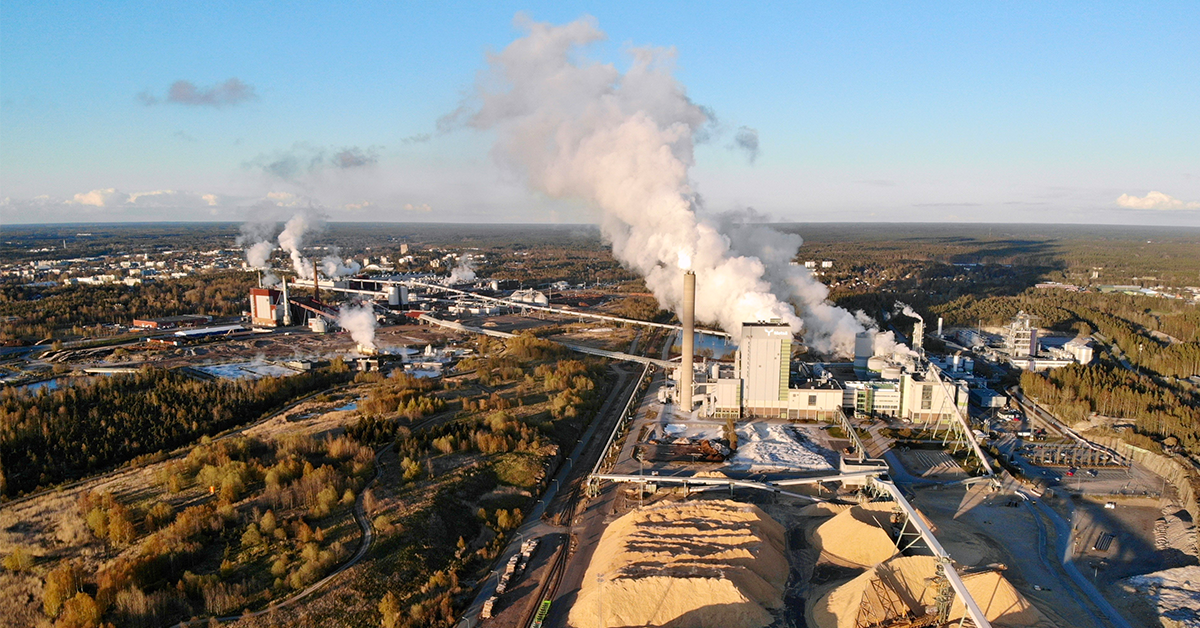2 min read
China’s Pulp Boom and the Future of Global Supply
ResourceWise
:
Aug 21, 2025 12:05:36 PM

The global pulp industry is entering a new era of structural change. Rising capacity investments, shifting wood fiber supply, and evolving trade policies are creating a turbulent market environment. At the center of this transformation is China, whose rapidly expanding integrated pulp industry is reshaping cost curves and trade flows worldwide. Understanding these dynamics is essential for producers, buyers, and investors to navigate the next phase of industry evolution.
China's Overcapacity and Margin Compression
China's pulp and paper sector has grown rapidly over the past decade, especially in virgin cartonboard production. In just five years, capacity has more than doubled, but operating rates remain low, hovering around 60%, levels at which most Western companies could not survive at.
This imbalance between supply and demand has led to significant margin compression, with many producers operating below sustainable profitability thresholds. The industry is now seeing some of its largest players report financial struggles, highlighting the current market's vulnerability.
China's Push Toward Integration
To manage the risks of volatile price fluctuations in pulp, and to increase global competitiveness, Chinese producers are investing in integrated pulp lines. By producing pulp in-house, they gain greater control over costs and reduce exposure to global market swings. Much of this marginal wood supply comes from Southeast Asia, where lower costs support competitive production.
While integration can improve cost resilience, it raises important long-term questions about fiber sustainability. China's heavy dependence on external wood sources makes its integrated strategy tightly linked to Southeast Asian forestry practices and policies.
Global Impacts of Chinese Expansion
China’s expansion could lead to several consequences that impact global trade and competitiveness. These include:
- Oversupply risks: With Latin America also adding large pulp projects, structural oversupply looms. This could keep prices close to all-time lows for some time.
- Packaging prices collapsing: Packaging grade prices have been sliding steadily, with signs they may bottom out.
- Rising Chinese exports: As domestic markets struggle to absorb new volumes, China is pushing more products abroad, raising pressure on mid-cost regions where Chinese producers can undercut prices.
- Trade disruption from tariffs: US tariffs are reshaping import patterns and are set to add more supply to global trade. This is expected to particularly hurt Nordic producers. With Finnish wood costs under strain, the ability to compete against cheaper Southeast Asian alternatives is uncertain. This raises the question of whether Finnish wood can compete with cheap Vietnamese wood.
Looking Ahead
The global pulp market is poised for continued volatility as supply races ahead of demand growth. Several scenarios are possible:
- Prolonged oversupply pushing weaker players out of the market.
- Selective competitiveness where integrated mills dominate while non-integrated producers struggle.
- Trade realignment as China increases exports and traditional exporters lose ground.
For global producers, the key to navigating this turbulence will be robust scenario planning, close monitoring of fiber dynamics, and clear strategies for differentiation—whether through sustainability, specialty products, or supply chain positioning.
At ResourceWise, we provide data-driven market intelligence and expertise that gives you insight into cost structures, trade flows, and future competitiveness under different market scenarios.
Our tools offer data-driven clarity into these uncertainties:
- WoodMarket Prices – Evaluate relative wood prices across regions, providing visibility into whether integrated mills can stay competitive in the face of shifting fiber dynamics.
- FisherSolve Cost Curves – Benchmark the impact of integration and see how new capacity reshapes global competitiveness.
- Market Optimizer – A module within FisherSolve that identifies which export markets are most attractive for exports under different trade scenarios, allowing producers to target opportunities more effectively.
Adapting to a Shifting Supply Landscape
China’s pulp expansion has had a major impact on both its domestic market and the global supply chain. As new capacity keeps coming online and wood fiber dynamics change, the world is entering a period of heightened competition and uncertainty.
Companies that can anticipate these changes and make informed decisions based on data will be best positioned to succeed in the next era of pulp. With ResourceWise’s insights and tools, industry experts can confidently navigate this evolving landscape.




